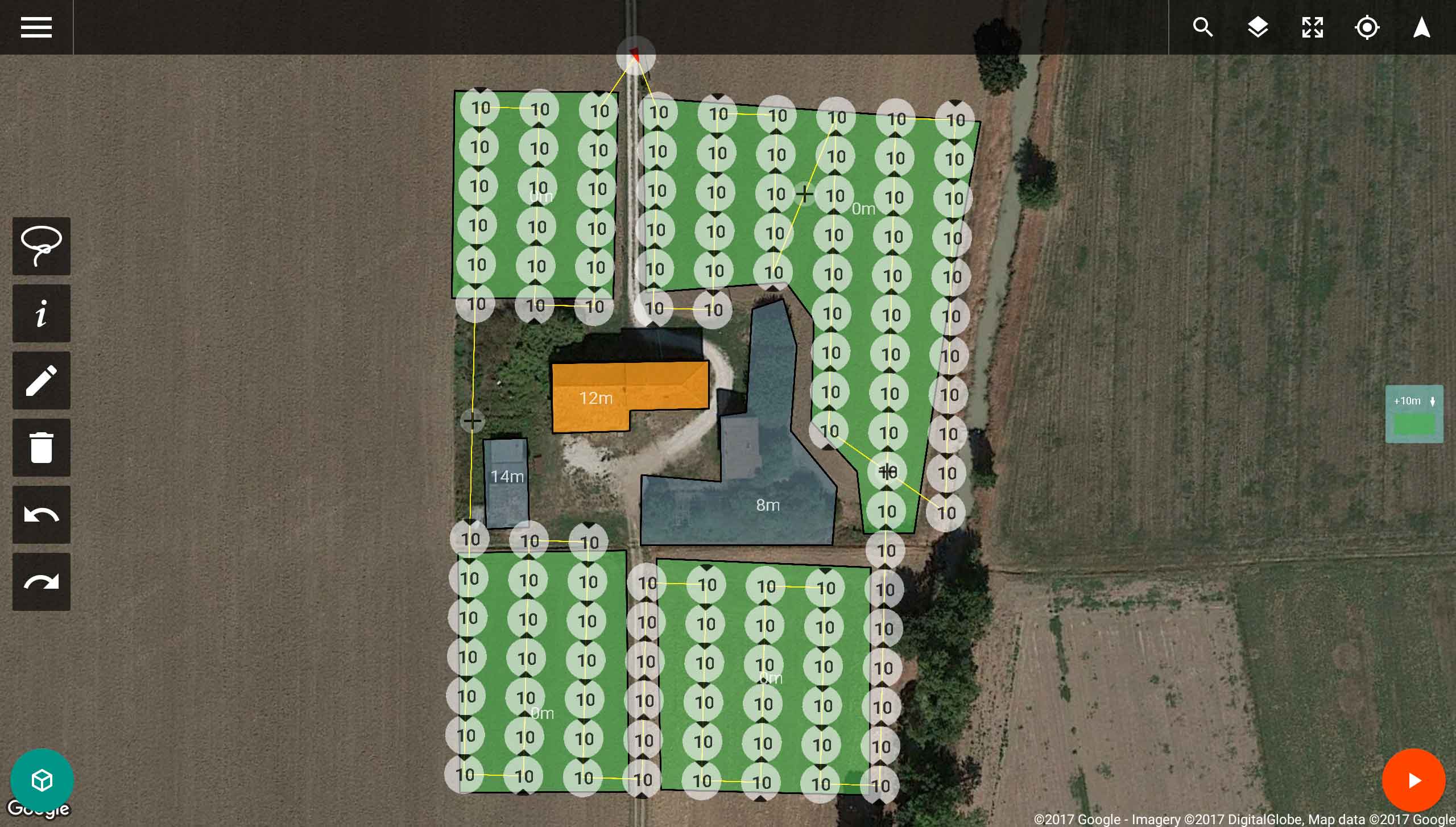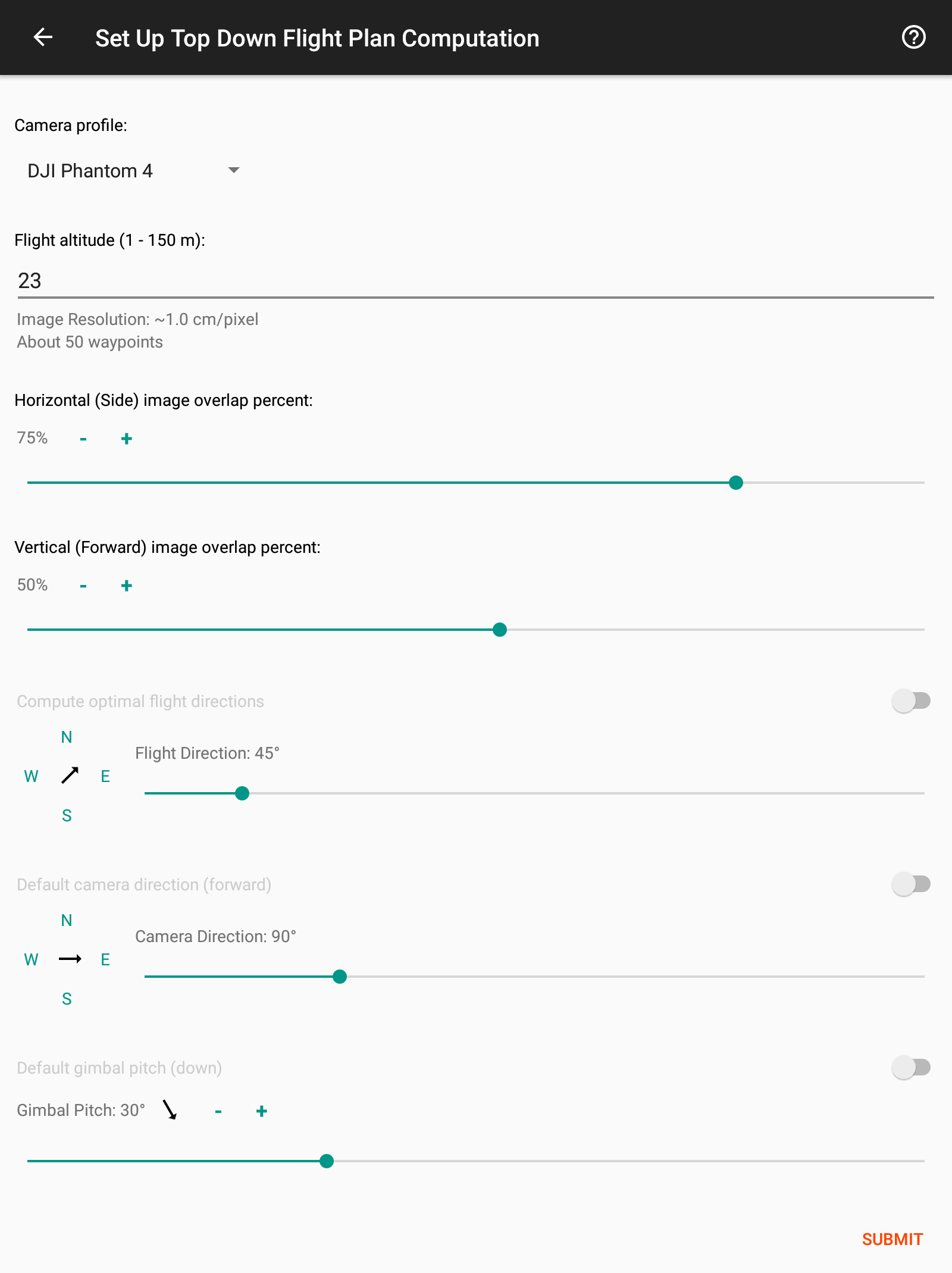A Top Down Flight Plan is suitable for capturing one or several areas from above, usually with the camera facing straight down. Example use cases include scanning terrains for mapping, inspecting rooftops and farm fields or just obtaining a bird's eye view of the landscape.

The following parameters can be used to tune a top down flight plan.

Copyright 2018 Drone Harmony AG. All Rights Reserved.